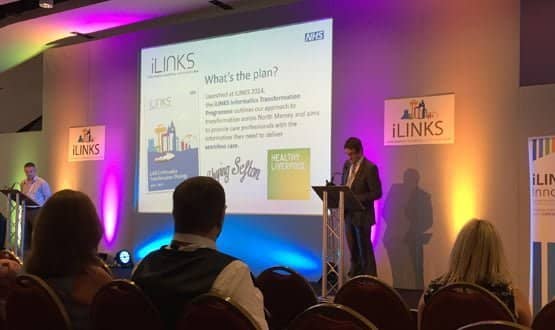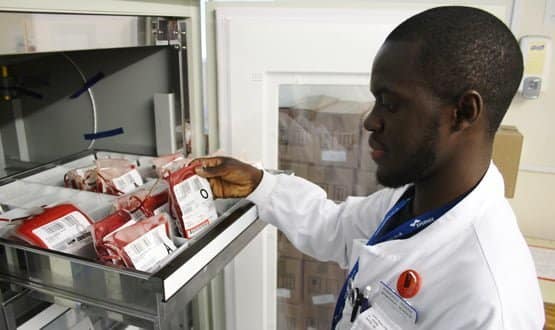We can work IT out
- 14 July 2015

There are few regions in the UK that face healthcare challenges as significant as those faced in Liverpool.
Economic inequality has contributed to major health inequalities, and now the city’s population is aging. In addition, variations in service quality have moved onto the agenda.
In response, NHS Liverpool Clinical Commissioning Group launched the Healthy Liverpool programme in 2014 as a way to transform health and social care across the city by 2020.
There are many aspects to Healthy Liverpool, from improving hospital services and supporting people to self-care, but underpinning all of these is the realisation that Liverpool needs to exploit and maximise the benefits of innovations in technology.
Helping to deliver these digital ambitions is the iLinks collaboration, which brings together stakeholders in the North Merseyside health economy. They have a shared goal to support improved sharing of healthcare information to make sure care in region is focused on the individual.
The practicalities of how this can be achieved are outlined in the iLinks Informatics Transformation Strategy, published last year, which describes a vision for how digital technology can support both Healthy Liverpool and a similar programme for the CCGs of nearby South Sefton and Southport and Formby.
It’s good to share
Last week’s annual iLinks event in Aintree heard that work on delivering this strategy is well on the way. A key piece of supporting work, the iLinks Information Sharing Framework for information governance, is expected to be signed off by various providers by the end of July.
This will mean that all data sharing activities between organisations in the region, where Emis Health is the main system supplier for GPs, will be covered by one framework – instead of the 2,500 plus individual agreements that are currently in place.
It’s an exciting moment for healthcare in Liverpool, according to Dr Simon Bowers, vice chair and clinical IM&T lead at Liverpool CCG, who says that the programme has “come of age in many ways”.
“We stand very, very close to completely changing the way the health and social care economy manages the people that it cares,” he says. “That feels like a gamechanger.”
Not that information is not being shared already. Liverpool has spent the best part of a decade giving an increasingly wide range of clinicians access to GP records, initially using the Emis Web-based portal that evolved into the Medical Interoperability Gateway, and then building access into hospital systems.
One of the major announcements at the iLinks event was that NHS organisations in North Merseyside have shared the GP records of around 200,000 patients a total of around 6.5 million times since the programme first started in 2008, with 5.5 million of these instances coming in the past year.
These sharing efforts will continue to grow rapidly, says Kate Warriner, iLinks managerial lead for the Healthy Liverpool digital care and innovation programme, who has been working to improve the sharing of patient record in Liverpool for nearly a decade.
“We are already sharing at pretty impressive scale. The new framework will give us that ability for every single practice cross North Mersey to have access to the information they need that is not held in their organisations.”
She mentions that North Mersey’s work on information governance that could be useful across the NHS in England, mentioning that the developments have been reviewed as part of NHS England’s work on interoperability.
“The feedback from everyone both externally and internally is that this is potentially something that could be adopted nationally as best practice in IG and how to do sharing at scale.”
The need for interoperability
Bowers and Warriner have lofty ambitions for how they want the healthcare system in North Mersey to change, but as seen with the development of the IG framework, the hard work is paying off and goals are turning into realities.
The next stage is to develop the interoperability of the several clinical IT systems in place across North Mersey to make sharing this inform a seamless, almost unseen process; with clinicians able to view relevant data from all providers on a single view on the tool they are most used to using.
“If I’m an Emis user, it will come through Emis. If I’m a Meditech user, it will come through Meditech. If you’re working for an organisation that decides Allscripts is the system for you, you will see all the Emis content, all the personal health record content, all the social care content, through your Allscripts feed.”
This final goal of all relevant information on one screen may seem “wonderful and utopian,” Bowers acknowledges, but the process is advancing quickly. There is an October goal to have an integrated care record in place between GP system Emis and social care system Liquidlogic, which is used across Liverpool City Council.
By the autumn, another major provider, Alder Hey Children’s Hospital NHS Foundation Trust, will also have switched on the capability to integrate information from other records in its Meditech electronic patient record, which went live last month.
Bashing heads together
With so many systems being used by different, both Bowers and Warriner acknowledge the importance of getting the suppliers on board early and working together on the terms of healthcare providers.
“You need to get those people together, and bash heads together to do what we need to serve the people,” said Bowers in his keynote presentation.
“What we've now got is a completely different ethos whereby everybody is coming to the table and saying we'd love to share; we can share; who are our competitors that we need to work with to make this happen for your patients?”
Matt Murphy, managing director at Emis, agrees with this. “It’s Merseyside that is helping to bridge the suppliers and getting them to work together on integration so that all the users out there get a common user experience, and people get to see records they need at the time they need them,” he says.
A local approach
The example of iLinks shows that real changes to the way information is shared and processed can be managed on a local level in a way that has historically been unconvincing on a national scale.
Bowers mentions that Liverpool is one of the national hubs for Genomics England’s project to map the genomes of 100,000 people with cancer and rare diseases, and the getting patients on board with sharing data will be a crucial part of the project’s potential.
“A lot of genomics and personalised medicine stuff will be delivered earliest by those economies that can convince their population that sharing anonymous data appropriately, safely and altruistically is going to bring enormous benefits.
“A lot of that will only be successful if we sell it right. Previous national programmes have sold it wrong completely across the board. It’s not about dishonesty; it’s about explaining the positives and mitigating the negatives by making sure you don’t do things like sell it to insurance companies.”
Warriner is leading by example in a way, signing up to use the patient health record launched by Emis last year, to help manage her asthma using her iPhone. This dedication and knowledge is spread across the iLinks team, however, as she is the first to acknowledge.
“We are dead lucky to have leadership that we have from a clinical perspective. The whole kit and caboodle is clinically led. That is massively important. This is a collaboration of hearts and minds with proper partnership working. We talked last year about making a huge step change and now it feels like we are kind of there.”


